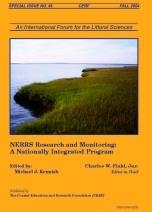The timing and quantity of fresh water flowing into the Rookery Bay National Estuarine Research Reserve, southwest Florida, have been altered by channelization of natural watershed sheetflow and increases in freshwater storage for aquifer recharge and irrigation. As part of the ongoing Everglades Restoration Initiative, the Southern Golden Gate Estates (SGGE) Restoration and Henderson Creek Freshwater Inflow Restoration Projects are opportunities to re-establish watershed sheetflow and restore the natural timing and quantity of fresh water flowing into the Reserve's estuaries. For 3 years, data loggers have been used to record water quality at continuous half-hour intervals, and Hester-Dendy artificial substrates have been used to sample oyster reef crab populations each month in four estuaries managed by the Reserve. These four estuaries differ in their seasonal and annual salinity patterns because of varying degrees of anthropogenically altered freshwater inflow. Our observations indicate that the relative abundances of the euryhaline (Eurypanopeus depressus) and stenohaline (Petrolisthes armatus) crab populations provide a useful biological performance measure to guide freshwater inflow restoration projects. This manuscript examines this metric as applied to the SGGE and Henderson Creek Freshwater Inflow Restoration Projects.
BioOne.org will be down briefly for maintenance on 12 February 2025 between 18:00-21:00 Pacific Time US. We apologize for any inconvenience.
How to translate text using browser tools
1 November 2004
Relative Abundance of Stenohaline and Euryhaline Oyster Reef Crab Populations as a Tool for Managing Freshwater Inflow to Estuaries
Michael Shirley,
Vicki McGee,
Tim Jones,
Beverly Anderson,
Jill Schmid
ACCESS THE FULL ARTICLE

Journal of Coastal Research
Vol. 2009 • No. 10045
Fall 2004
Vol. 2009 • No. 10045
Fall 2004
estuary
Eurypanopeus depressus
Petrolisthes armatus
restoration




